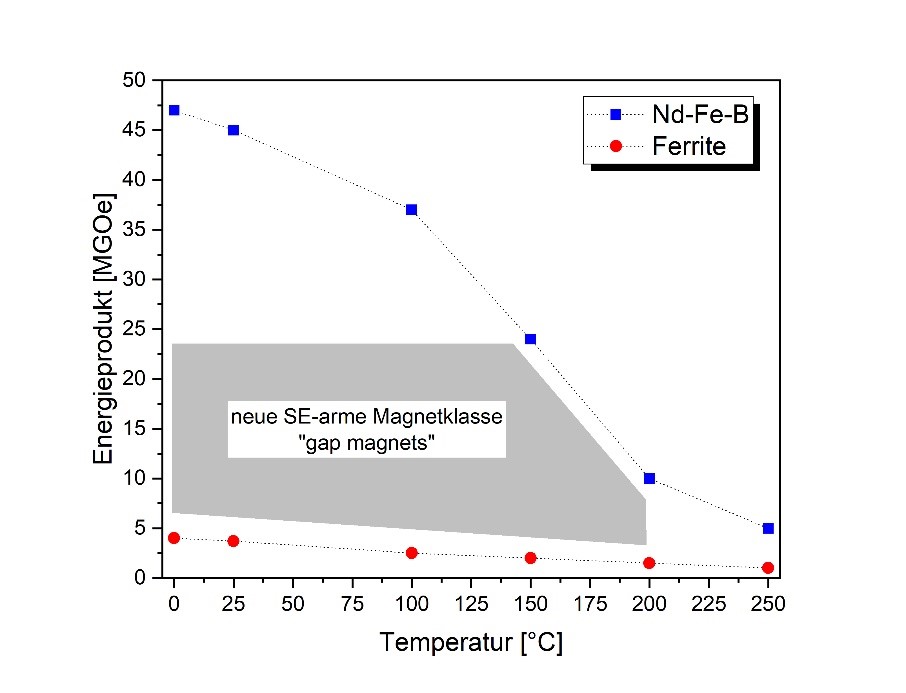
Permanent magnets are used in a wide range of applications that convert energy. These include traction motors for electric vehicles and generators for wind turbines, as well as magnets in speakers, robots or hard drives. In principle, two classes of permanent magnets have been used for this purpose to date; 1) high-performance rare-earth-containing magnets such as Nd-Fe-B or 2) low-performance rare-earth-free magnets based on ferrites. Currently, rare-earth-containing permanent magnets are increasingly used for products of the highest energy efficiency in a compact design. However, since these magnets have a high rare earth content, they are comparatively expensive and are considered critical in terms of supplying European demand. Since the mining of rare earths consumes many resources and releases radioactive elements, a reduction of their content while maintaining high magnetic performance is desirable for new classes of magnets.
The aim of the "GapMag" project is therefore the production of a new class of magnets with reduced rare earth content, whose magnetic properties are to be found between Nd-Fe-B and ferrites, in order to close this application gap. This new class of magnets is to be produced via existing powder metallurgy processes in the form of fully dense bulk magnets. Thus, new application areas can be developed and products with lower critical element content can be manufactured.
Duration:
01.09.21 - 31.08.2022
Sponsor:
Discover, Fraunhofer-Gesellschaft